Understanding Beam Smoke Detection
Part of our educational life safety series for building owners, this article explains what a beam smoke detector is, how it works, its key features and benefits and which projects best suit these types of products.
Part of our educational life safety series for building owners, this article explains what a beam smoke detector is, how it works, its key features and benefits and which projects best suit these types of products.
Beam smoke detection devices are advanced fire detection systems that use projected light beams to detect the presence of smoke across large open spaces. These sophisticated devices generally consist of a transmitter that projects an infrared beam across a protected area to a receiver unit positioned on the opposite side. When smoke particles interrupt or obscure this light beam, the system triggers a fire alarm signal.
For building owners managing large spaces such as warehouses, shopping centres, or industrial facilities, beam detectors offer an effective solution for fire detection where traditional point detectors would be impractical or insufficient. Unlike conventional smoke detectors that monitor a relatively small area around the device, beam detectors can be spaced 15 metres apart, and because they can detect smoke anywhere along the path of the beam, they can protect linear distances of up to 160 metres. This makes them ideal for covering expansive areas such as warehouses, hangars and atriums with minimal equipment.

Beam smoke detectors operate on the principle of light obscuration, utilising infrared light beams to create an invisible detection barrier across protected space. This focused beam of light travels in a straight line from one end of the space to the other and is continuously monitored for any changes in its intensity.
When smoke particles enter the beam path, they scatter and absorb the light, reducing the signal strength. The system's intelligent processing unit analyses this signal reduction and, when it exceeds predetermined thresholds, initiates an alarm condition. Modern beam detectors incorporate sophisticated algorithms to distinguish between genuine smoke conditions and temporary obstructions such as birds, insects, or steam, significantly reducing false alarm incidents.
This technology has evolved over time, to the point where newer systems can detect smoke at much lower concentrations and provide better performance in challenging environmental conditions such as high airflow areas or spaces with varying temperature conditions.
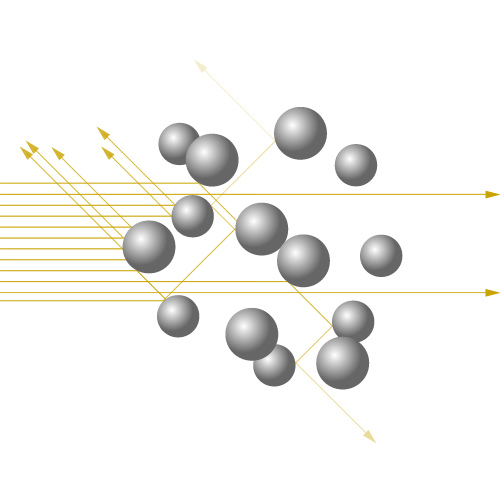

Traditional end-to-end systems consist of separate transmitter and receiver units positioned at opposite ends of the protected area. These systems offer maximum flexibility in coverage distance and are particularly effective in large open spaces where clear line-of-sight can be maintained between the two units. However, they do require more cabling, usually between the units, and in some cases separate wired power supplies.
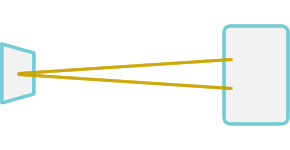
Reflective systems combine the transmitter and receiver in a single unit, utilising a specialised reflector positioned at the far end of the detection area. The light beam travels from the detector to the reflector and returns to the same unit. This configuration simplifies installation by requiring power connection at only one location, making it particularly suitable for retrofit applications or areas where running cables to both ends would be challenging.
Beam detectors excel in providing comprehensive protection across large areas with minimal equipment. A single beam detector can effectively monitor areas that would require dozens of traditional point detectors, significantly reducing installation costs and system complexity. This efficiency is particularly valuable in high-ceiling applications where accessing individual point detectors for maintenance would also be challenging and expensive.
In architecturally sensitive environments such as historic buildings, museums, or prestigious commercial spaces, beam detectors offer discrete fire protection without compromising visual aesthetics. The transmitter and receiver units can be positioned discretely at high level along walls or ceilings, with the invisible light beam creating no visual impact on the protected space.
Beam detectors perform exceptionally well in environments that challenge traditional detection methods. they are particularly effective in:
Modern beam detectors incorporate self-monitoring capabilities that continuously verify system operation and automatically compensate for gradual changes in environmental conditions. Many systems provide remote monitoring capabilities, allowing facility managers to verify system status without physical access to the devices.

Warehouses, manufacturing plants, aerospace hangars and distribution centres are some of the ideal applications for beam detection systems. These environments typically feature large open spaces, high ceilings, and challenging conditions that favour beam detection over any alternative technologies. The ability to provide comprehensive coverage with minimal equipment makes beam detectors particularly cost-effective in these applications.
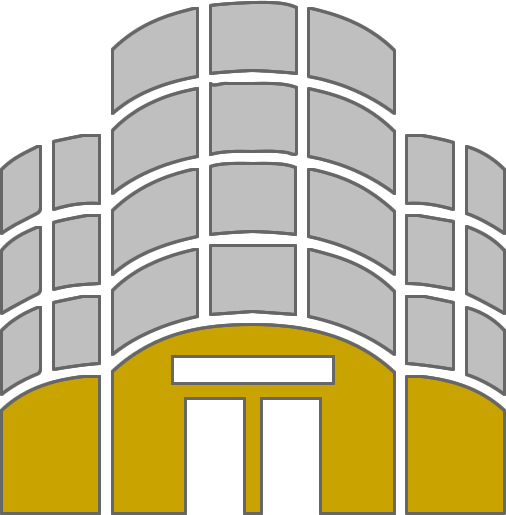
Large retail stores, shopping centres, multi-level hotel atriums, and exhibition halls benefit from beam detection's ability to provide protection without visual intrusion. The systems can be configured to follow the perimeter of protected areas or create detection grids across large spaces, adapting to complex architectural layouts.

Airports, railway stations, and transport terminals can utilise beam detectors to monitor large public areas, baggage handling facilities, and maintenance areas. The robust performance characteristics, their reliability and their easy maintenance make them well-suited to the demanding operational requirements of transportation facilities.
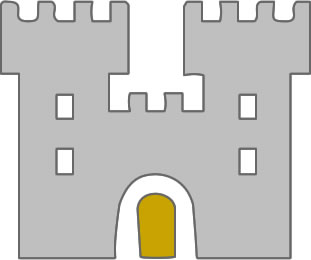
Churches, museums, and historic structures often require fire detection systems that minimise both structural and visual impact, whilst still providing effective protection. Beam detectors can be discretely and safely installed to protect large volumes while preserving architectural integrity and avoiding intrusive point detector cabling installation throughout historic spaces.
Beam smoke detection devices must comply with rigorous European standards to ensure reliable performance and compatibility with fire alarm systems. The primary standard governing beam detectors is EN 54 Part 12, which specifies requirements for line-type smoke detectors using transmitted light beams.
This standard establishes:
In the UK, beam detectors must also comply with the recommendations of BS 5839 Part 1: 2025, a commercial fire detection and alarm system standard, which provide guidance on system design, installation, and maintenance practices. Building regulations and fire safety legislation require that installed systems meet these standards and undergo regular testing and maintenance by qualified professionals.


Successful beam detector installation requires thorough site survey and planning to identify optimal positioning for transmitter units, receiver units, and reflectors. Key considerations include:

Precise alignment between transmitter and receiver units is crucial for reliable operation. Professional installation teams can use specialised alignment tools and signal strength meters to achieve optimal positioning. But modern beam detectors now generally incorporate either manual alignment aids such as LED indicators or digital displays, or automatic mechanical and electronic self-alignment features, to simplify this process even more, and ensure accurate installation.

Beam smoke detectors generally require less frequent maintenance than traditional point detectors due to their design characteristics. However, regular maintenance remains essential to ensure continued reliable operation and compliance to local standards:
Daily Visual Inspections: Verification of LED status indicators and checking for obvious obstructions or damage
Periodic Functional Testing: Testing alarm functionality using appropriate test equipment or built-in test features
Annual Professional Maintenance: Comprehensive inspection, cleaning, and calibration by qualified technicians
Optical Component Cleaning: Periodic cleaning of transmitter and receiver lenses to maintain optimal signal transmission
Modern beam detectors can incorporate drift compensation and self-monitoring capabilities within their software, that automatically adjust both the base line and fire threshold for any gradual environmental contamination over time. This maintains the device’s ability to provide early warning of maintenance requirements at any point in its lifecycle.

Beam detectors integrate seamlessly with conventional fire alarm control panels through standard detection circuits. Advanced beam systems can also provide additional information such as signal strength levels, location and maintenance status to intelligent addressable fire alarm systems, through the fire system protocol, enabling sophisticated system monitoring and diagnostics.
While beam detectors may have higher individual unit costs compared to traditional point detectors, they often provide superior economic value when protecting large areas. Key economic advantages include:

The beam detection industry continues to evolve with technological advances that improve performance and expand application possibilities. Recent developments include:
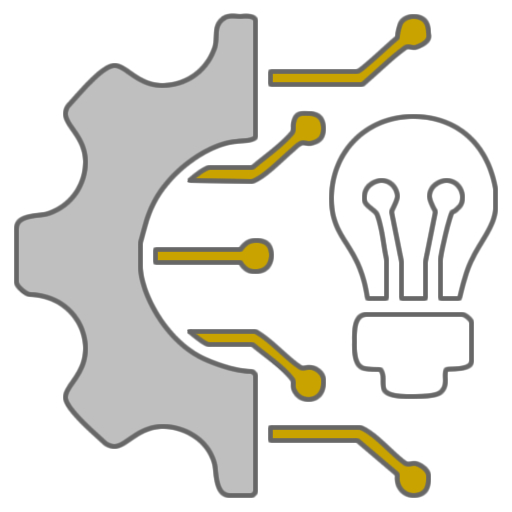
Building owners should understand that beam detectors, while highly effective in appropriate applications, have certain limitations:

Beam smoke detection devices represent a sophisticated and cost-effective solution for fire detection in large open spaces. Their ability to provide comprehensive coverage with minimal equipment makes them particularly valuable for building owners managing warehouses, retail spaces, industrial facilities, and other large-volume applications.
Understanding the capabilities, limitations, and proper applications of beam detection technology enables building owners to make informed decisions about fire protection systems. When properly designed, installed, and maintained by qualified professionals, beam smoke detectors provide reliable early warning fire detection that protects both property and occupants while meeting all relevant UK and European safety standards.
As with all life safety systems, consultation with certified fire protection professionals remains essential to ensure appropriate system design, compliant installation, and ongoing maintenance that preserves system reliability and regulatory compliance.
This article is part of our educational series on life safety systems designed to help building owners make informed decisions about fire protection technologies.
This article is part of our "Hochiki On" educational Fire Safety series, designed to help building owners understand modern life safety technologies. For more information about life safety solutions, please explore our other educational resources or contact our technical support team.